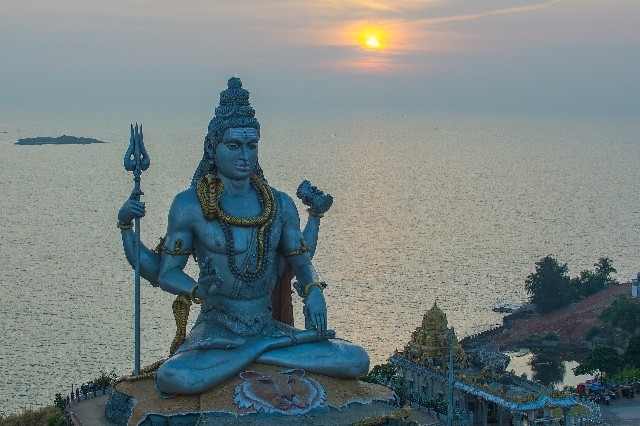We use cookies to analyze our website traffic. By continuing to use the site, you agree to our Terms and Policies
READ MAGNIFICENT!! THEORETICAL DERIVATION OF THE CHARGE OF QUARKS FROM VEDAS:
It>https://www.sciencedirect.com/science/article/a... is generally assumed that atoms are charge neutral - with protons and electrons having equal and opposite charges. While the charge of electron has been measured in oil drop experiments; the charge of a proton has not been directly measured, as it could not be isolated. Though this can explain atoms, it cannot explain molecules as charge neutral atoms could not be held together. When neutrons were discovered, it was assumed to be charge neutral. The equation of Coulomb’s law does not apply to interaction between a charged body like proton or electron with that of a charge neutral body. This would make the atom unstable. Experiments have put a non-zero electric charge on neutrons, which has been measured and found to be qn = (-1.5~2.2) x 10^-20 electron charges . Particles have a weak charge, analogous to the electric charge that describes a particle’s propensity to have weak interactions with other particles. This weak charge is predicted by the Standard Model to be about -0.989 for neutrons, about -0.071 for electrons and about +0.071 for protons, as measured in elementary charge units (Source: Jefferson Accelerator Laboratory). Similarly, charge of electrons and protons are found not to be equal. The upper limit to the electron proton charge difference is (0.8 ± 0.8) 10^−21 e (Physics Letters B, Volume 137, Issues 5-6, pages 439-442 - http://dx.doi.org/10.1016/0370-2693(84)91752-0).
Since Coulomb’s law says that equal charges repel, the concept of binding energy had to be postulated to explain the presence of multiple protons in the nucleus. But this does not explain the residual negative charge of neutrons and how they are held within the nucleus. When quarks were discovered, their charge was assumed to be + 2/3 and – 1/3 through indirect evidence as they cannot be isolated due to confinement. Till date the values of these charges and the value of alpha, the fine structure constant (that gives the strength of the electromagnetic charge), have only been experimentally measured indirectly. There is no theory to derive these values.
We have theoretically derived the charge of quarks according to Vedas and found that the modern value contains an error element of 3%. Instead of + 2/3 and – 1/3, the charges would have to be +7/11 and -4/11 respectively. This would explain the slight residual negative charge of neutrons. It will make the atom charged - with a residual negative charge. But being directed towards the nucleus, it would not be apparent in measurement from outside. Rather, this way it would hold the atom together without the need for any extra binding energy. We have also theoretically derived the value of fine structure constant alpha from the Vedas, which is 7/960 (1/137) at the ground level and 7/900 (1/128) at the Z-boson, i.e., 90 GeV level. These are close to the modern experimental values as shown below.
Though about 200 sub-atomic particles have been catalogued by the Standard Model of particle physics, there are only 17 known fundamental particles including the so-called Higgs boson (which belongs to a different class). However, if we consider the color charges separately and include the anti-quarks and anti-leptons, the number goes up to 61 (48 fermions and 13 bosons including 8 gluons). There are no anti-bosons, as they are energy particles. The above list does not include force carriers for gravitation. Veda puts this number at 33, as explained below.
According to ऋग्वेदः 1-45-2 (also शुक्ल यजुर्वेदः - त्रयत्रिंशत् वै देवाः), the total numbers of quantum particles are only 33, which give rise to 3306 other particles. The 33 are 8 वसु (8 अग्निम् of तैत्तिरीय आरण्यकम् 1-8, also the same as the 8 gluons of the Standard Model of Particle Physics), 11 रुद्र (varieties of electromagnetic radiation) and 12 आदित्य (आददानां याति- stellar radiating bodies from stars to globular clusters to galaxies that radiate photons) besides 2 अश्विनौ. According to तैत्तिरीय आरण्यकम् 1-8, the 11 रुद्र are ‘महादेवाः’ and ‘गन्धर्वगणाः’ called ‘स्वानभ्राट्’ etc. According to the definition ‘गन्धर्वाः सोमरक्षकाः’, and their characteristic (सुषिर), these provide magnetic moment to the particles. According to प्रश्नोपनिषद् 3-8, the 12 आदित्याः are the forces that reach out externally - ‘वाह्यप्राण’ - that radiate out and make objects observables - ‘चाक्षुषं प्राणमनुगृहाणः’ (also तैत्तिरीय आरण्यकम् 1-7). The अश्विनौ pair represents the two spin states of Standard Model. Of the 33, only up to 21 अहर्गण (एकविंशस्तोम) belong to nucleus (अग्नि) that moves outwards from the center indicating positive charge. The rest are the opposite (सोम) moving in from periphery to center (पृष्ठ्यस्तोम), indicating negative charge. According to योगकुण्डलिन्युपनिषद् – 3/7, confinement is the state between अग्नि and सोम (चन्द्रर्कमध्यस्था शक्तिर्यत्रस्था तत्र बन्धनम्).This makes a band of three-fold structure which शतपथब्राह्मणम् 14-8-4-1 and 14-8-5-1 describe as प्रजापति or हृदयमम. These, according to गोपथब्राह्मणम्, are the central mass (ऋक), the intra-nucleic field (यजुष्) and the energy levels (साम). These make up the protons and neutrons. Thus, according to ऋग्वेदः, the magnitude of positive charge of quarks, which are त्रिवृत्, is +21/33 or +7/11. That of the negative charge component is -12/33 or -4/11. The 3% difference from modern value can explain observations described earlier. This is better than the modern value.
Now we will give evidence in support of the above interpretation. The atomic nucleus is a stable structure. Thus, the total mass of the nucleus or the atom should be same as or more than its constituents. It is known that the observed atomic mass of all know isotopes (except oxygen) is always less than the sum of the masses of nucleons and electrons present in them. This difference is called mass defect and is expressed in atomic mass units. For example, let us consider the helium atom, which is most abundant in the universe after hydrogen atom, and since hydrogen in its natural state does not have a neutron. The calculation below is not exact, but approximate. However, since most calculations in atomic level are not exact (for example, the electron orbit is not exactly circular or the value of π could be more precise, etc), it will not materially affect the outcome. The pure natural helium atom consists of 2 protons, 2 neutrons and 2 electrons.
Mass of 2 protons = 2 x 1.00785 a.m.u = 2.01516 a.m.u (1 a.m.u = 931.5 MeV).
Mass of 2 neutrons = 2 x 1.00893 a.m.u = 2.01786 a.m.u.
Mass of 2 electrons = 2 x 0.000543 a.m.u = 0.001086 a.m.u.
Thus, the total expected mass of helium atom should be: 4.03410 a.m.u.
However, the observed mass of helium atom is: 4.00390 a.m.u.
Difference between the expected mass and actual mass of one helium atom is: 0.03020 a.m.u. This difference could be 1 unit (a.m.u.) in 1/0.03020 or a little over 33 helium atoms. The excess over 33 will be explained later. The mass defect multiplied by the a.m.u is said to give the binding energy. Thus, to put it differently, the binding energy of helium nucleus is about 1/33 of one a.m.u. If we discard the hypothetical concept of binding energy, then stability of the atom can be described by this 1/33 of the mass difference or average atomic mass unit is a little over 33 times of this difference. This proves the Vedic concept, where 17th or सप्तदशस्तोम is the fulcrum (यूप), and the अहर्गण after reaching 33 reverses (from पुराण गाहर्पत्य to नुतन गाहर्पत्य), making it a closed and stable unit.
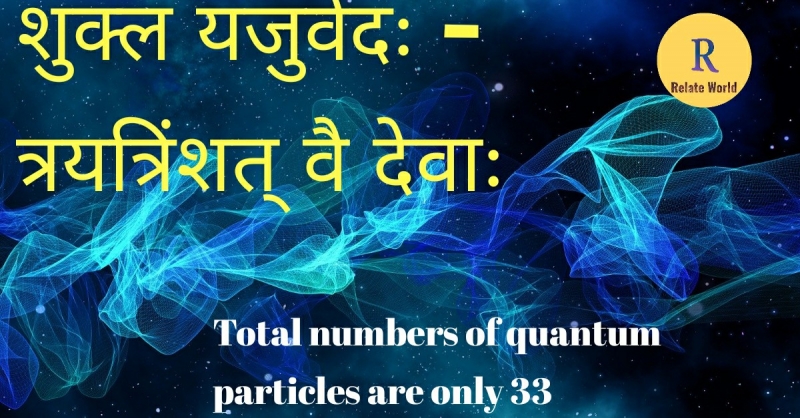
WHAT IS VEDA – वेद क्या है?Know from modern physics view.
दासोऽहमिति मे बुद्धिः ददस्व दासवत्सलः ।
“दा”कार अवखण्डय दासमात्मीकुरुष्व ।
(Oh Savior of servitors – दासवत्सलः ! Please give me the sense of being a Servitor – Daasoham - दासोऽहम्. Then remove the Daa – दा from it (दासोऽहम्), so that it leaves only सोऽहम् – Thou art me. Thereby I become a part of Thou.)
VEDA is not the four printed volumes of that name. They are not related to any specific religion. It is the universal book of knowledge of mankind from which all science can be derived. By knowledge – ज्ञानम् is meant the perception of commonalities (called SAADHARMYA - साधर्म्य) of everything in the universe (कस्मिन्नु भगवो विज्ञाते सर्वमिदं विज्ञातं भवतीति – what is that knowledge by knowing which, everything becomes known) - to determine the common cause of everything (like the protons and electrons - देवाः - to quark-gluon plasma and beyond -प्रकृतिलयाः - and who or what created these and how, and how do they combine). For example the statement “Everything is verily Brahman – सर्वं खल्विदं ब्रह्म – छान्दोग्य उपनिषदत्”, which sees BRAHMAN in everything as the common constituent, is knowledge. Here the word BRAHMAN is neither a philosophical nor a metaphysical concept as is generally understood, but it is a scientific concept, as will be described later. By science - विज्ञानम् is meant the differentiating characteristics (called VAIDHARMYA - वैधर्म्य) of everything in the universe (the mechanism of how they evolved, for example from the quark-gluon plasma to the present material universe with its various combinations). The statement “BRAHMAN became everything – ब्रह्मैवेदं सर्वम् – नरसिंह उपपुराण”, which sees the evolution of one commonality – BRAHMAN – into everything (like starting from quark-gluon plasma – अग्निसोमात्मक जगत् - to protons, neutrons and electrons to atoms and molecules to their various combinations that create everything) is science.
Since Vedas are universal, the science derived from the Vedas are also universal. But modern science, which developed incrementally, is reductionist. Quantum Theory is not one coherent theory, but several unconnected and at times contradictory theories, approaches and interpretations - many without physical proof. Modern science treats strong-nuclear interaction, weak-nuclear interaction, electromagnetic interaction and gravitational interaction as the four fundamental interactions (सम्बन्ध). Here, while the first three are intra-body interactions, the last one – gravity – is interbody interaction – hence belongs to a different class. The scientists have combined the middle two in electroweak theory and are now searching for an elusive grand unified theory (GUT).
Vedic science takes the opposite route based on the charged nature of everything (सामर्थ्य सर्वभावानां लिङ्गमित्यभिधीयते). While the Standard Model uses “gauge bosons” that mediate different interactions, Vedic science uses the nature of the constituents (उपादानविकल्पाः) - nature of negative and positive charges (confining proximally and radiating out or distancing - संस्त्यानप्रसवौ लिङ्गौ) which appear as the “gauge bosons” of SM. It starts with gravitational interaction (उद्याम सम्बन्ध - interbody interaction of everything including parts within the body or particle) as the all-pervading mother of all interactions, which symmetrically (proximity-proximity variable, proximity-distance variable, distance-proximity variable, and distance-distance variable) resolves into strong nuclear interaction (अन्तर्याम सम्बन्ध), beta-decay part of weak nuclear interaction (वहिर्याम सम्बन्ध), electromagnetic interaction (उपयाम सम्बन्ध) and alpha decay (यातयाम सम्बन्ध). Similarly, relativity (आपेक्षिकत्व) is treated as wrong description (जातिसाङ्कर्य) of reality (प्रशस्तपादकृत पदार्थधर्मसंग्रह). It is apparent to the observer – not real to the participant. Superposition (अध्यास), like Uncertainty (अविद्या), is due to our inability to know beyond certain point. Entanglement (सूत्रवायु and अलातस्पन्दन) and Symmetry (यथादर्शे) have also different connotations.
FIVE MEANINGS OF THE WORD VEDA – वेद के पाञ्च अर्थ.
The word Veda has five meanings. The first is knowledge (विदँ ज्ञाने॑). It refers to the texts known as VEDA – वेदशास्त्र – which was edited into four parts based on functional requirements. The RIGVEDA contains science of forms (particles and structures – ऋग्भ्यो जातां सर्वशो मूर्त्तिमाहुः – तैत्तीरियब्राह्मणम् – 3-12-9-3), the YAJURVEDA deals with all motions (सर्वा गतिर्याजुषी हैव शश्वत् - तत्रैव), SAAMAVEDA deals with all radiation (सर्वं तेजः सामरूप्यं ह शश्वत् - तत्रैव), all derived from one BRAHMAN (सर्वं हेदं ब्रह्मणा हैव सृष्टम् - तत्रैव). The ATHARVAN VEDA is related to the bosonic part (ऋचा मूर्तिः याजुषी गतिः साममयं तेजः भृग्वङ्गिरसाम् आपः – गोपथब्राह्मणम् पूर्व-2-9). These make the four appearances of the same fundamental principle (एतत् ब्रह्म एव चतुष्पात् - तत्रैव). They belong to two different interrelated classes (यज्ञः द्विः संस्थितः इति - तत्रैव). Of these, the first three are related to the fermionic (आङ्गिरस अग्निः) part of the universe. The last is related to the bosonic part (भार्गवसोम). Everything is created out of these (सर्वमापोमयं भूतं सर्वं भृग्वङ्गिरोमयम् - गोपथब्राह्मणम् पूर्व-1-29). Thus, VEDA says: confinement is eternal. Whatever appears as radiating out, comes out of confinement only (स्त्रीयः सतीस्ताँ उ मे पुंस आहुः – ऋग्वेदः 1-164-16). This includes the big bang or the big bounce.
The second meaning of Veda is proper analysis (वि॒दँ॒ वि॒चार॑णे). It contains the universal characteristics of everything in a specific way. It never repeats anything nor does it say even a letter more than the minimum necessary in any given context. If the same subject comes up elsewhere, it does not repeat whatever has already been told earlier, but continues from thereafter till the context requires. If there is more on the subject, it is left for the proper occasion to arise. If a word is repeated or more letters are used than the minimum, it has other meanings. Thus, the entire Veda has to be kept in view to understand any specific aspect. If we follow the prescribed procedure and analyze the Vedas properly, then we can develop any theory we want to, from the Vedas (यस्तर्केणानुसंधत्ते स धर्म्म वेद नेतरः - मनु).
In the Vedas, each letter or word has specific meaning in a given context and cannot be substituted by another letter or word. For example, a collective is known as a SAMSTHAA (संस्था) or VIDHAA (विधा). But while the former is referred to in cases where each is a subset of the other (वसुधानकोष - like star-planet-satellite), the latter is used for independent collectives (like a group of stars). Similarly, a background is referred to as AALAMVANA (आलम्बन) or AAVAPANA (आवपन). But while the former is used in case of one-to-one correspondence (एकत आधारभूमी), the latter is used in universal sense (सर्वतः आधारभूमी). The word “this” can be referred to as ASYA (अस्य) or ETASYA (एतस्य). But while the former is used in case of one, the extra letter in the latter indicates all in a class.
Modern science uses the word electron sea. The word sea is called SAMUDRA (समुद्र), because it dissolves everything coming out in all directions into one confinement (तद्यत्समवद्रवन्त तस्मात्समुद्र उच्यते - गोपथब्राह्मणम् पूर्व-1-7). Since the electrons confine the radiation coming out of protons equally from all directions (like solar radiation confined in the magnetosphere of various planets), it is called the electron sea. The word MRHTYUH (मृत्युः) is interpreted as death. But Vedas use it in the sense of release from a confinement (स समुद्रादमुच्यत स मृच्युरभवत्तं वा एतं मुच्युं सन्तं मृत्युरित्याचक्षते परोक्षेण - तत्रैव). This way even radioactive decay is also MRITYU.
INDRA is not a warrior, but it represents the breaking of equilibrium of every system to start the initial action (स योऽयं मध्ये प्राणः एष एवेन्द्रः – शतपथब्राह्मणम् – 6-1-1-2). Rest is a state where all forces acting on a point cancel each other to be in equilibrium. If any of the forces are removed from the state of rest, action starts. The force that ignites every system into action, is called INDRA (तानेष प्राणान्मध्यत इन्द्रियेणैन्द्ध यदैन्द्ध तस्मादिन्ध इन्धो ह वै तामिन्द्र इत्याचक्षते परोक्षऽम् - तत्रैव). It has three characteristics: 1) it makes everything conducive for interaction (रसादानम् - रसँ आस्वादनस्नेह॒नयोः॑, रसँ शब्दे॑ च - बृहद्देवता), 2) breaks the confinement of structures like neutrons and black holes (वृत्रस्य निर्बहण - तत्रैव), and 3) the basic form of all forces (बलस्यनिखिलाकृतिः - तत्रैव).
VARUNA (वरुण) is often described as a God and sometimes identified with Neptune. But in Vedas, it is that which confines (वरुणपाश) something that otherwise confines others (ता भीता अब्रुवन् भगवन्तमेव वयं राजानं वृणीमह इति । यच्चं वृत्वाऽतिष्ठंस्तद्वरणोऽभवत् तं वा एतं वरणं सन्तं वरुण इत्याचक्षते - तत्रैव). It has three characteristics (पटरो विक्लिधः पिङ्गः एतद्वरुणलक्षणम् – तैत्तिरीयारण्यकम् प्रथमप्रश्नः). These are: 1) it drags everything inwards in a highly twisted manner (पटरो - पटँऽ ग्र॒न्थे, ग्रन्थँ बन्ध॑ने, ग्रथिँ॒ कौटि॑ल्ये च), 2) has very low temperature contrary to modern views, which treats them as very hot (विक्लिधः - क्लिदूँ आद्रीभा॒वे) and 3) crushes everything into a highly compact mass (पिङ्गः - पिजँऽ हिंसाबलादाननिकेत॒नेषु॑). By this definition, even a neutron, which contains an electron, or a so-called black hole, which radiates x-rays only (and not gamma rays like in supernova explosion), are caused by VARUNA. Thus, one has to be extremely careful about the meaning of the terms used in the Vedas. Since presently none follow this method, ALL available interpretations of Vedas are wrong.
The third meaning of VEDA is description of existence (वि॒दँ॒ सत्ता॑याम्). It classifies everything that exists into three categories: nomenclature of concepts (नाम), form or physical characteristics (रूप), and interactive potential (कर्म). The first leads to desire (इच्छा - इषँ (इषुँ) इ॒च्छाया॑म्) for getting something different for self or for others (स्वार्थं परार्थं वाऽप्राप्तप्रार्थनेच्छा), which gives rise to efforts (प्रयत्न), memory (स्मृति), positive or negative interactive potential (धर्म-अधर्म). The second leads to perception (ज्ञानम् - ज्ञा॒ अव॒बोध॑ने) by analyzing the different characteristics to not only understand and memorize the invariant nature of these, but also to make a unified concept about any observable (विशेषेण सामान्येन चावबोधः). The third leads to differentiation (डुकृञ् करणे - कॄञ् हिं॒साया॑म्) between sequential states that arises due to interactive potential (गुणभूतैरवयवैः समुहः क्रमजन्मनाम् । बुद्ध्या प्रकल्पिताभेदः क्रियेति व्यपदिश्यते - वाक्यपदीये). These three appear as mind (मन), interactive potential (प्राण) and observables (वाक्) respectively. These interpretations are called ADHYAATMA (अध्यात्म), ADHIDAIVA (अधिदैव) and ADHIBHOOTA (अधिभूत) respectively. Their mechanism is explained by the concepts of AVYAYA (अव्यय), AKSHARA (अक्षर) and KSHARA (क्षर) respectively. They are the three manifestations of PARAATPARA (परात्पर), which is the ULTIMATE BRAHMAN.
The fourth meaning of the word Veda is wide ranging (विदँ॒ चेतनाख्याननिवा॒सेषु॑), as it describes consciousness, evolution of the universe and its various forms. Initially there was only one Veda. Since the creation (Big Bang or rather Big Bounce) started with a motion (YAT – यत् - यतीँ॒ प्रय॒त्ने, also यतँ निकारोपस्का॒रयोः॑) in some point in space (JOOH – जूः - जु॒ङ्ऽ गतौ॑), it is called YAJUH – यजुः (अयं वाव यजुर्योऽयं पवते । एष हि यन्नेवेदं सर्वं जनयति । एत यन्तमिदमनुप्रजायते । तस्माद्वायुरेव यजुः । अयमेवाकाशो जूः यदिदमन्तरिक्षम् । एतं ह्याकाशमनु जवते । तदेतद्यजुर्वायुश्च अन्तरिक्षं च यच्च जुश्च तस्माद्यजुः – शतपथब्राह्मणम् – 10-2-6-1). What it literally means is that everything started with a motion in space, which spread out at great speed that broke the equilibrium of the static background inducing speed (the so-called vacuum energy) to create acceleration. This motion got reduced due to friction with the static background (akin to a bow-shock effect that is seen when a boat is pushed in still water. Unless the engine keeps it propelling, it stops at some point). Due to this, the spread of the big bang, which can be described as the exterior of a wheel (नेमि) spreading in all directions, came to a halt after some point (अन्तरिक्ष – अन्तरा क्षान्तं भवति - that which ceases after some point, or सह हैवेमावग्रे लोकावासतुः । तयोर्वियतयोर्योऽन्तरेणाकाश आसीत् तदन्तरिक्षमभवत् । ईक्षं हैतन्नाम ततः पुरा । अन्तरा वाऽइदमीक्षमभूत् । इति तस्मादन्तरिक्षम् । शतपथब्राह्मणम् – 7-1-2-23). This way, it cut off (निशीर्ण) a big volume from the infinite expanse which held itself at equilibrium (धर्मचक्र). It was unique by itself (ARANYA - अरण्य - a collective is called GRAAMA - ग्राम). Hence, this, which is the boundary of the universe, is called NAIMISHAARANYA - नैमिषारण्य. The Vedas accept multiple unconnected universes with basic similarities, but slightly different evolutionary differences.
But why and how did the initial action for creation take place? Modern scientists and philosophers are debating (www.pnas.org/cgi/doi/10.1073/pnas.1210467...) on readiness potential (RP) seen before voluntary self-initiated movements. Some say, it is not necessarily causal and determinative of the action. What was the Readiness Potential or the voluntary self-initiated movements that started the creation? What we call action has two components: initial action (पुरुषार्थकर्म) and inertial action (संस्कार). Inertial action starts as a chain reaction after initial action breaks the conserved state or inertial state. But how did the initial action begin? Vedic principles say: ज्ञानजन्य भवेदिच्छा इच्छाजन्य कृति भवेत् । कृतिजन्य भवेत् कार्य तदेतत् कृतमुच्यते. This literally means, whenever there is a realization of a deficiency that needs to be rectified or change that needs to be done, if the knowledge of how to rectify or change is available, it leads to a desire for such rectification or change. After this conscious desire comes into operation, it leads to release of energy that leads to initial action. Inertial action follows initial action.
Before creation, the primordial state was in total equilibrium (समरस). There was nothing else (तस्माद्धान्यन्न परः किं चनास - नासदीयसूक्तम्). That state felt a necessity for change due to its inherent instability (कामस्तदग्रे समवर्तताधि मनसो रेतः प्रथमं यदासीत् - तत्रैव). This led it to be divided into two components called RASA – रस (असद् वा इदमग्र आसीत्। ततो वै सदजायत । तदात्मानं स्वयमकुरुत । तस्मात् तत्सुकृतमुच्यत इति । यद्वै तत्सुकृतम् । रसो वै सः - तैत्तिरीयोपनिषत् 2-7-2) - or the background structure, and VALA - बल (नायमात्मा बलहीनेन लभ्यो – मुण्डकोपनिषत् 3-2-4) - or the energy that was in a potential state (akin to Gordon’s zero point energy state – a spin less quantum scalar field, or the Higg’s field), which resolved into two states of spin one and spin half (अध्यर्ध – बृहदारण्यकोपनिषत् – 3-9-8). This makes for two components: BRAHMA (ब्रह्म or प्रजापति) that is the background structure (प्रतिष्ठा) and KARMA (कर्म) that starts all initial action (योऽयं पवत - तत्रैव). The KARMA raises the pressure, which increases temperature. The Vedas describe this as: प्रजापतिर्ह वा इदमग्र एक एवास । स ऐक्षत कथं नु प्रजायेय इति । सोऽश्राम्यत् । स तपोऽतप्यत् । स प्रजा असृजत् । पुरुषो वै प्रजापतेर्नेदिष्ठम् – शतपथब्राह्मणम् – 2-5-1-1.
Along with the motion in space, at every point, there was reconnection like we see in the magnetosphere (एष एव यत् एष ह्येति - गच्छति - तत्रैव). The junction point is surrounded by a solid structure like Earth (in its magnetospheric reconnection which has a crucial role in the plasma environment) on one side and the moving away solar radiation in the other side (तदेतद्यजुः ऋक्सामयोः प्रतिष्ठितं ऋक्सामे वहतः - तत्रैव). There are three types of reconnection phenomena. These are: reconnection in the distant tail, reconnection in the near tail associated with sub-storms, and formation of distributed magnetic loops in the neutral sheet. Correspondingly, one fundamental and imperceptible मूल यजुर्वेदः is divided into three perceivable components – Vedas. These can also be classified based on structure or form like the nucleus or Earth (ऋक्), the inter-nucleic space or magnetosphere (secondary यजुः) and the radiating sphere or (साम) like the electron orbit or the whistlers and the nozzle in the magnetosphere. Of these, since the primary YAJUH - मूल यजुर्वेदः – like the solar radiation, is the biggest of all (बृहत्त्वात्) and is spread out everywhere (बृंहणत्त्वात्), it is called BRAHMAN - ब्रह्म.
The fifth meaning of VEDA gives the benefits of such knowledge (विदॢँ॑ ला॒भे). Once we have knowledge about the objects, we can fulfil our desire by necessary efforts. This is the technology part, which is described in texts called BRAAHMANAM (ब्राह्मणम्) and their appendices called SHRAUTASOOTRAM (श्रौतसूत्रम्).
THE INFINITE VEDAS – अनन्ता वै वेदाः.
The RIGVEDA deals with structures. Structures have infinite varieties. YAJURVEDA deals with motion. Motion requires a force to displace something from an initial state. The same force acting on a body can reveal itself variously in 2, 3, 5, 7, 11 or 122 different ways by various permutations and combinations. These are called different forces that induce different types of motion. However, since displacements are related to bodies, and since bodies are infinite in number, their motions are also infinite. Radiations come out of bodies. These are also confined in the background (space is the universal background). Though the radiations can be classified into 1000 categories (सहस्रांशु), their absorption into or emission from different backgrounds makes these radiations infinite. Since these three aspects are called RHK, YAJUSH, SAAMAN (ऋक्-यज्जुः-साम) respectively, they are also infinite. For this reason, the Vedas are also treated as infinite (अनन्ता वै वेदाः । एतद्वा एतैस्त्रिभिरायुर्भिरन्ववोचथाः । अथ त इतरदननूक्तमेव । एहीमं विद्धि । अयं वै सर्वविद्येति – तैत्तिरीयब्राह्मणम् 3-10-11). Thus, the only way to understand the nature of the universe is to know the fundamental principles (तस्मै हैतमग्निँ सावित्रमुवाच - तत्रैव) relating to these three aspects (एषो एव त्रयी विद्या - तत्रैव). Here ATHARVAN VEDA is not considered, as it is related to the opposite effect of confinement into structures.
VARIOUS BRANCHES OF VEDAS – वेदशाखा विचार.
As has been explained above, VEDA deals with universal truths only. It says: the same laws of physics govern the microcosm as well as the macrocosm (यत्पिण्डे तद्ब्रह्माण्डे). For every quantum system, there is a corresponding macro system. Only we should correlate them properly. For example, one Vedic principle says: everything is fourfold (चतुष्टयं वा इदं सर्वम् – शाङ्ख्यायनब्राह्मणम्). If we look at an atom, we find the nucleus, the intra-nucleic field, the electron orbits and the net radiating charge (the so-called valence electron that participates in the formation of a chemical bond). In a human, it is the heart, the various energy flows within the body, the body proper, and the electrical coronal discharges captured in Kirlian photography. In the Sun, it is the core, the radiative and convective zones, the photosphere and the corona. Action has four steps: initial action (क्रिया) that separates the forces acting on a body (क्रियातो बिभागः) to breaks the equilibrium (बिभागात् पूर्वसंयोगः नाशः) to move the body to an adjoining place (ततो उत्तरसंयोगः). Thereafter the body moves due to inertia. The effect of action are also four types: creation of something new (उत्पाद्य), consolidation (आप्य), transformation (संस्कार्य) or transmutation (विकार्य). Etc.
These can be divided into two categories (अग्निसोमात्मक जगत्): those containing heat and carrying positive charge (अग्निः) that propels everything into motion (अग्रणीर्भवति) and the colder confining layers SOMA (सोम) that carries negative charge and confines the flares – thereby burns itself. For example, water consists of oxygen and hydrogen. While Hydrogen is flammable, oxygen is not. But hydrogen burns in the presence of oxygen, which helps it burn.
According to Vedic physics, the accepted value of charge of quarks contain an error of 3%. Instead of +2/3 and -1/3, they should be +7/11 and -4/11. This will make proton charge +10/11 and neutron charge -1/11. This makes all atoms possess a residual negative charge. It is not evident during measurement because it is directed inwards – from the outer boundary that we come across and touch, towards the nucleus. This appears as the binding energy. In the case of oxygen, whose mass number is 15.999, the net charge should be +72/11, against 8 electrons carrying -8 units of charge. Thus, in the Sun, the corona, which confines the photosphere, is much hotter than the photosphere.
Heat flows in three different ways: conduction (निर्भुज), radiation (प्रतृर्ण्ण) and convection, which is an intermediate state between the other two (उभयमन्तरेण). Anything that shows these characteristics are called AGNIH (अग्निः), AADITYAH (आदित्यः) and VAAYUH (वायुः) respectively. Everything has these three layers in them. The fourth layer is called AAPAH (आपः). These appear as s, p, d and f orbitals or the K, L, M, N shells in the atomic structure. Though theoretically there can be more orbitals, in reality they do not exist.
The last shell can have up to 32 electrons, i.e., 16 in each side of the nucleus. Thus, if we treat the nucleus as one SAMSTHAA (संस्था), they form 33 layers. These are called AHARGANA (अहर्गणः) in Vedas. Of these, the central one or the 17th (the revised nucleus) is called YUPA (यूपः) or pivot. These 33 are distributed in four layers of AGNIH (अग्निः), VAAYUH (वायुः), AADITYAH (आदित्यः) and SOMA (सोम) – a derivative of AAPAH (आपः) respectively. The first 8 are AGNIH (अग्निः). 11 are VAAYUH (वायुः). 12 are AADITYAH (आदित्यः). In between, there are two SOMA (दिक्सोम and भास्वरसोम), which act as the spin states – (अश्विनौ – नासत्य and दस्र) also. Of these, up to 9 AHARGANA (अहर्गणः) is called PRITHWI (पृथ्वी) because it only helps in increasing atomic number (प्रथति विस्तार जातीति), the next up to 20 is called ANTARIKSHA (अन्तरिक्ष), the 21st is called DYOUHLOKA or SURYASTHAANA (द्व्यौलोक or सूर्यस्थान), the rest are called AADITYAH (आदित्यः). Each AHARGANA (अहर्गणः) has different names and functions, which are not being discussed here.
The central structure of everything is RIGVEDA (ऋचा मूर्तिः). It is the fermionic part and extends up to the first 21 AHARGANA (अहर्गणः). Only when there is disturbance in these (अग्निर्जागार तमृचः कामयन्तेऽग्निर्जागार तमु सामानि यन्ति – ऋग्वेदः 5-44-15), the proton (पुराण गार्हपत्यः) - neutron (नुतन गार्हपत्यः) conversion chain (देवासुरसंग्राम) starts. These determine the structure of the atom. Hence RIGVEDA is said to have 21 branches (शाखा).
The YAJURVEDA represents motion. Motion starts with the breaking of the equilibrium of every system to start the initial action (स योऽयं मध्ये प्राणः एष एवेन्द्रः). This can happen in one hundred (दश दशतः – दशाक्षरा वै विराट् – तैत्तिरीयसंहिता – 5-3-2-3 also पिङ्गलः छन्दःशास्त्रम्) ways (यद्द्याव इन्द्र ते शतं शतं भूमीरुत स्युः - ऋग्वेदः 8-70-5). These are not being discussed here. These are the 100 branches of Yajurveda. Including the MOOLA YAJURVEDAH, these become the 101 branches of Yajurveda.
Motion is in a two dimensional plane. But when we come to radiation, it is always in three dimensions. It radiates all around. Thus, based on the above principle (अंशुनां जातिनिर्णयः), it can radiate in 1000 ways (न त्वा वज्रिन् त्सहस्रं सूर्या - तत्रैव). These are the 1000 branches of Saama Veda.
Consolidation is possible only for compact objects PRITHWI (पृथ्वी). According to the Vedic classification, the first consolidation can be between 8 VASU (वसु) and at least one AAPAH (आपः) category. This makes it 9 types. These are the 9 branches of Atharvan Veda.
Various views concerning the authorship or otherwise of Vedas and why it was not written, will be discussed separately.
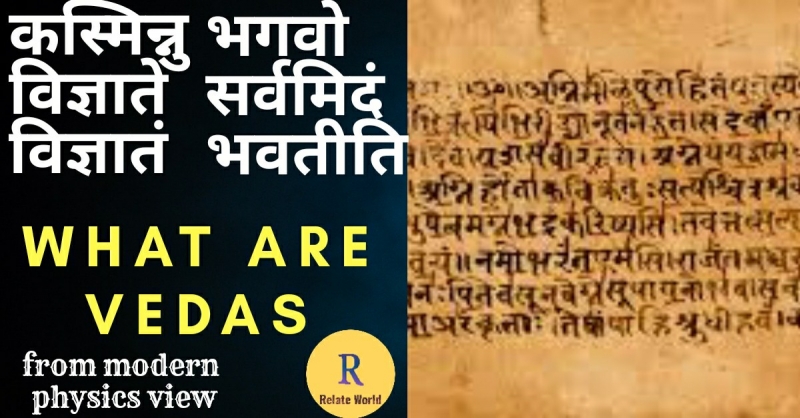
Do you want to know (with reference) what is meaning of Indra in modern science terms.
Many of us has seen character of Indra in TV serials, or read in books. Some say he was mythological character,some interpret him as physical force.
Find out one of the interpretation of Indra from modern physics view.
INDRA is not a warrior, but it represents the breaking of equilibrium of every system to start the initial action (स योऽयं मध्ये प्राणः एष एवेन्द्रः – शतपथब्राह्मणम् – 6-1-1-2). Rest is a state where all forces acting on a point cancel each other to be in equilibrium. If any of the forces are removed from the state of rest, action starts. The force that ignites every system into action, is called INDRA (तानेष प्राणान्मध्यत इन्द्रियेणैन्द्ध यदैन्द्ध तस्मादिन्ध इन्धो ह वै तामिन्द्र इत्याचक्षते परोक्षऽम् - तत्रैव). It has three characteristics: 1) it makes everything conducive for interaction (रसादानम् - रसँ आस्वादनस्नेह॒नयोः॑, रसँ शब्दे॑ च - बृहद्देवता), 2) breaks the confinement of structures like neutrons and black holes (वृत्रस्य निर्बहण - तत्रैव), and 3) the basic form of all forces (बलस्यनिखिलाकृतिः - तत्रैव).
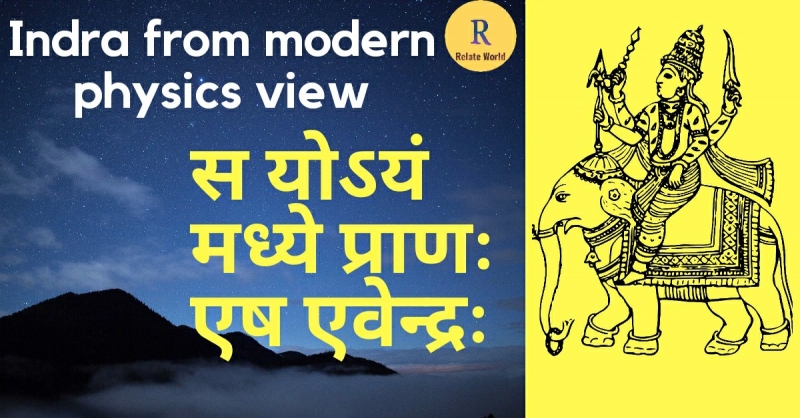
With great respect to Newton, happy to say, Indian Rishi discovered law of motions.
Since childhood we all are studying law of motions. Law of motions tells us basically how everything around us moves. Starting from you to planets, all are affected by law of motions.
In schools we are taught this laws we're discovered by Newton, but actually before him thousands of years ago they were discovered by Indian Rishi.
But where is the proof?
Acharya Prashastapada (आचार्यः प्रशस्तपादः) says in कर्मनिरूपण प्रकरणम् of पदार्थधर्मसंग्रहः, a commentary on Kanada Sootram (कणादसूत्रम्): “वेगो मूर्तिमत्सु पञ्चसु द्रव्येषु निमित्तविशेषापेक्षात् कर्मणो जायते नियतदिक्क्रियाप्रबन्धहेतुः स्पर्शवद्द्रव्यसंयोगविशेषविरोधी क्वचित् कारणगुणपूर्वक्रमेणोत्पद्यते”।
If we break this sentence, we get the three Newton’s Laws of Motion and more.
1) वेगः निमित्तविशेषात् कर्मणो जायते।
Meaning: Change of motion is due to impressed force.
This is same as Newton’s first law of motion.
2) वेगः निमित्तापेक्षात् कर्मणो जायते नियतदिक क्रियाप्रबन्धहेतुः।
Meaning: Change of motion is proportional to the impressed force and is in the direction of the force.
This is same as Newton’s second law of motion.
3) वेगः संयोगविशेषविरोधी।
Meaning: Action and reaction are equal and opposite.
This is same as Newton’s third law of motion.
Humans will continue to respect brilliant scientist Sir Issac Newton for his contribution, but at the same time we should also give respect to the first discoverer of these laws.
World should appreciate development of thoughts, science in India that took thousands of years ago.
Taking pride is not enough, Indians must follow there forefathers and do magnificient work,which can direct humanity towards truth through their lives.
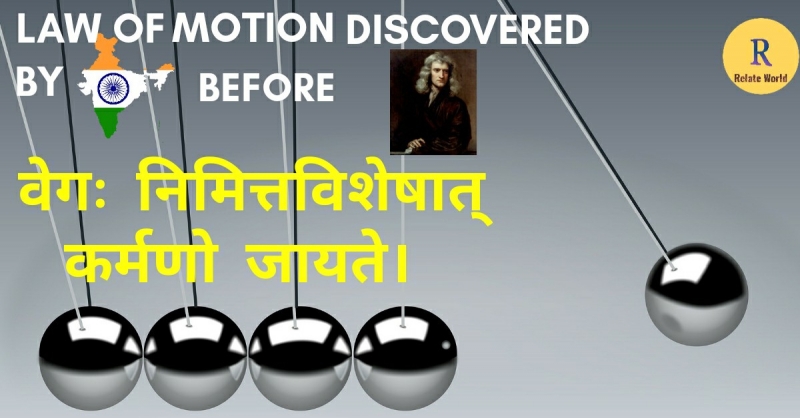
Why Holikadahana is celebrated one day before Full Moon Day of Chaitra or the advent of spring.
Ritu is important for procreation. It is also related to fertility cycle. Spring is the best period for fertility. It is marked by a change over from cold to warm season. It is also marked by the large varieties of flowers and leaves that spring up to life. People contact cold during this change over period. Hence, the previous night, people gather around fire to give up the last vestige of cold. The next day, then apply the dried and powdered leaves and flowers to their body and take a thorough bath, which cleanses the bodies. This natural principle is enforced by making it ritualistic.
Read science behind holika dahan
https://relateworld.com/basudeba/post/223

Burn ignorance in holika dahan by knowing SCIENCE OF HOLIKA DAHANA.
Holika Dahana – burning of Holika, the demoness (होलिकादहन), is associated with Nrisimha Avatara (नृसिंह अवतार). The story is that the Demon King Hiranya Kashipu (हिरण्यकशिपु) had a son named Prahlada (प्रह्लाद), who was a devotee of Lord Vishnu. The father tried to dissuade him, but failed. Once he called Holika (होलिका), a relative, who got a boon that she will not be burnt by fire, and told her to jump into fire with Prahlada in her lap. This way, Prahlada would get killed. But Prahlada prayed to Lord Vishnu and due to His blessings, Holika got killed in the fire, while Prahlada escaped unhurt. That day is celebrated by burning the effigy of Holika.
In the changing social scenario, some ignorant people equate it with burning of women and brand it as a cruel act. But the story is not real and depicts great science in a popular language for easy comprehension of laymen. Since it is related to Avatara (अवतार), it is necessary to know the science of Avatara also.
Transformation (परिणाम) can be of two types: evolution (विवर्त्त) and incarnation (अवतार). When something changes while retaining its own essential features and form, it is called evolution (विवर्त्त). When the transformation involves only a part and not the whole, and it is for a specific purpose, it is called incarnation – Avatara (अवतार). The word Avatara literally means “coming down (अव) as savior (तारक)”. When a cosmic catastrophe occurs (धर्मविप्लव – यदा यदा हि धर्मस्य ग्लानिर्भवति), the Omnipresent Universal Controller intervenes (तदात्मानं सृजाम्यहम्) in that part (this is His coming down – paying special attention to a limited part) to bring order (परित्राणाय साधूनां विनाशाय च दुष्कृताम्। धर्मसंस्थापनार्थाय).
The fourth Nrisimha Avatara (नृसिंह अवतार) is related to formation of protons and neutrons. One basic principle enunciated by the Vedas is that we cannot describe massive objects completely (अनवर्णे इमे भूमी). This is because we “see” massive objects when their radiation reaches our eyes. Except or without the radiation, we cannot see the object. But when we touch it, we cut out the radiation and touch the body that emits radiation. Thus, what we see (the radiation) is not what we touch (mass). Either way, we cannot define the object properly.
Initially, the radiating galaxies and their central black holes were created. We could not see the black hole, which provided mass to the structure. We could only see the galaxies, which are shining very brightly, making it difficult to observe (दुर्निरीक्षाय ते नमः). The central black hole sitting on the lap of the galaxy is called Hiranya Kashipu because it tried to controll the outward motion of the radiation of the galaxy by its pressure of collapsing inwards (हर्यँ गतिका॒न्त्योः + कन्यन् = हिरण्यम्, कशँ॒ गतिशास॒नयोः॑। स तु कश्यपस्य दित्यां पत्न्यां जातः। तस्य भार्या कयाधुः। को वायुः। स एव आवृतेन धृता।). However, the galaxy churned its inside out (macro equivalent of proton-nuclear conversion) to shine brightly (नमो नृसिंहरूपाय दैत्योरःस्थल दारिणे। कोटिसूर्य प्रभायास्मै दुर्निरीक्षाय ते नमः।). The Avatara is called Nrisimha because of its tendency of getting the desired effect through churning inside out (नॄ न॒ये + हिसिँ हिं॒साया॑म्).In this process, extensions of the radiating arms came out, which are called its off-spring (सन्तान), because it is similar to the mother structure (अवयव-अवयवी प्रवाह). When such arms are symmetrical like in spiral galaxies, it looks very pleasant. Milky Way galaxy has four such arms. These are called Samhrada, Anuhlada, Hlada and Prahlada (संह्रादः, अनुह्लादः, ह्लादः, प्रह्लादः) respectively. Of these, the interior one is called Prahlada. Since it is nearer to the central black hole, there is exchange of force between it and the magnetic field of the black hole. The magnetic field is called Hola (होला) or Holika (होलिका) because it changes polarity from time to time (हु॒ दानाद॒नयोः॑). Since the interior arm survives the interaction with the black hole through the magnetic field (अर्द्धपक्वेः च होलकः), it is described as Prahlada getting unburnt by Hola, who herself gets damaged. Since this process is repeating everywhere from the universe to a pole (आब्रह्मस्तम्भपर्यन्त), it is said that Nrisimha appeared from a pillar (स्तम्भ). Since there is no concept of day or night there, it is said that the time was evening, which is neither day nor night. There are eight gluons. These are called Vasu in our scriptures (अग्निश्च जातवेदाश्च। सहोजा अजिराप्रभुः। वैश्वानरो नर्यापाश्च। पङ्क्तिराधाश्च सप्तमः। विसर्पेऽवाष्टमोऽग्निनाम्। एतेऽष्टौ वसवः क्षिता इति). The quarks are confined by these eight gluons in eight different ways. These are called सम्पात, विप्रपात, महापात, निपातन, बक्र, तीर्यक्, ऊर्द्ध्व, लघु. Since these are the characteristics of Anushtup (अनुष्टुप्), it is said to represent Nrisimha. Why holika dahan on before full moon day of chaitra Or spring
https://relateworld.com/basud
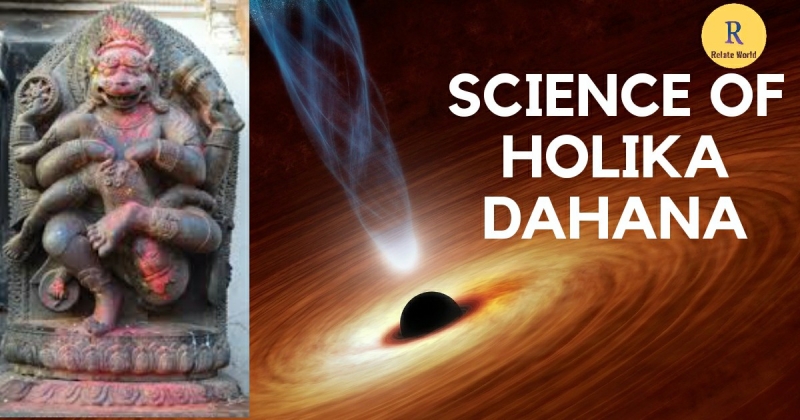
Part 2-Know Vedic Science Of Motion And Inertia.
Combining bosons (सोम, which is ऋतम्) will not lead to stable structure formation (निरर्थक). It would only increase the intensity of energy with its wave motion (कम्प). But combining fermions (8 types of gluons or अग्निम् in its primordial form – अग्निः, जातवेदाः, सहोजा, अजिराप्रभुः, वैश्वानरः, नर्यापाः, पङ्क्तिराधाः, विसर्पि) in the presence of bosons would help structure formation (चिति), though, without confinement, they would explode (विष्फोटक). It must be noted that quarks are not found individually. The positively charged particles are treated as AGNIM - अग्निम्, and negatively charged particles are treated as SOMA - सोम in Vedic sciences. Positively charged particles (अग्निम्) are associated with outgoing forces that creates different particles (प्रसव) and negatively charged particles (सोम) are associated with the confining force (संस्त्यान). Hence it is said that the universe is nothing but charge interaction (अग्निषोमात्मकजगत्). All structures are formed when the positive charge of the nucleus (अग्निम्) is confined by the negative charge or the electron orbit (सोम) limiting or separating it from others (चंद्रार्कमध्यमा शक्तिर्यत्रस्था तत्र बन्धनम्).
Different perception and reactions arise from the differentiation of the medium (प्रकाशकाधारस्य भिन्नत्वे सति). The medium always has resistance (impedance - रस), which increases with its density. Density arises when similars are bombarded on one point (चिति) and are held together by a force (खं सन्निवेशयेत् खेषु चेष्टनस्पर्शनेऽनिलम् । पक्तिदृष्ट्योः परं तेजः स्नेहेऽपो गाञ्च मूर्तिषु). Both bombarding and holding in one place require energy (वल), which generates inertia. It breaks the resistance of the medium to resist and make it less resistant (मूर्छा). Hence the confined structure is called matter (मूर्छनात् मूर्तीः). Thus, the evolution of the entire creation can be explained only by two concepts of impedance – रस (रसो वै सः – तैत्तिरीयोपनिषदु) and energy (वल - नायमात्मा वलहीनेन लभ्यो - मुण्डकोपनिषद्), which generates inertia (संस्कार).
Since force causes motion (गति), cessation of force should imply cessation of motion (गतिराहित्य). However, since the bodies are seen to move even after the force ceases to operate, there must be some force that moves an object even after the original force ceases to operate. Kanada explains this by what he calls a shadow force (प्रतियत्न), as it mimics the normal effect of force (गुणान्तर आधान) through extension like shadow is our extension that moves with us. This shadow-force (प्रतियत्न) is called inertia (संस्कार). The inertia of motion (वेग) is found not only in solids (पृथ्वी), but also in fluids (जल), radiations (तेजः) and forces (वायुः), in addition to mind (मनः), though the last cannot be verified physically (अमूर्तगुणः). It has only to be inferred (अनुमित) from its effects.
Prashastapada says: वेगो मूर्तिमत्सु पञ्चसु द्रव्येषु निमित्तविशेषापेक्षात् कर्मणो जायते नियतदिक्क्रियाप्रबन्धहेतुः स्पर्शवद्द्रव्यसंयोगविशेषविरोधी क्वचित् कारणगुणपूर्वक्रमेणोत्पद्यते । Let us discuss it part by part.
वेगो मूर्तिमत्सु पञ्चसु द्रव्येषु नियतदिक्क्रियाप्रबन्धहेतुः ।
Literally it means: Inertia of motion (वेगो) in the five corporeal substances (मूर्तिमत्सु पञ्चसु द्रव्येषु) is the cause (हेतुः) of successive controlled (प्रबन्ध) motion in a definite direction (नियतदिक्क्रिया).
What are the five corporeal substances? These are:
a) solids (पृथ्वी – प्रथति विस्तारयति – चरणसंचारयोग्य। अस्याः पृथिव्याः स्वयम्भूमण्डलात् क्षरस्य केन्द्रात् प्रथनम् प्रसारणम् विस्तारः समभवत्। तस्मात् अस्याः नाम पृथिवीति। निरुक्तम्),
b) fluids (जल – धीयते अनेनेति – तस्य भावः अथवा अप् – तद्यदब्रवीदाभिर्वा अहमिदं सर्वमाप्स्यामि यदिदं किञ्चेति तस्मादापा अभवंस्तदपामप्त्वम् – गोपथब्राह्मणम् – पूर्व 1-2),
c) heat radiations (तेज – तेजयति तेज्यतेऽनेन वा),
d) (non-heat) motion (वायु – वातीति – वा गतिगन्धनयोः) and
e) mind (मनः – मन्यते बुद्ध्यतेऽनेनेति).
The inertia of motion (वेग) is perceptible through observation (चक्षुग्राह्य) or contact (स्पर्शग्राह्य or संयोगज). What is the proof that others apart from solids have inertia of motion? Let us examine each case separately.
Inertia in solids is well known. But inertia between fluids is no less common. When two rivers combine, their forces increase that continues to remain even after they move away from the point of intersection. The dynamics inside the Sun are examples of inertia of radiation. Hurricanes, cyclones, and typhoons are created with sufficiently warm sea surface temperatures, atmospheric instability, high humidity in the lower to middle levels of the troposphere, enough Coriolis force to develop a low pressure center, a pre-existing low level focus disturbance, and low vertical wind shear. These are examples of inertia of atmospheric air. Thought is the inertia of mind, which will be discussed separately.
#vedicscience #science
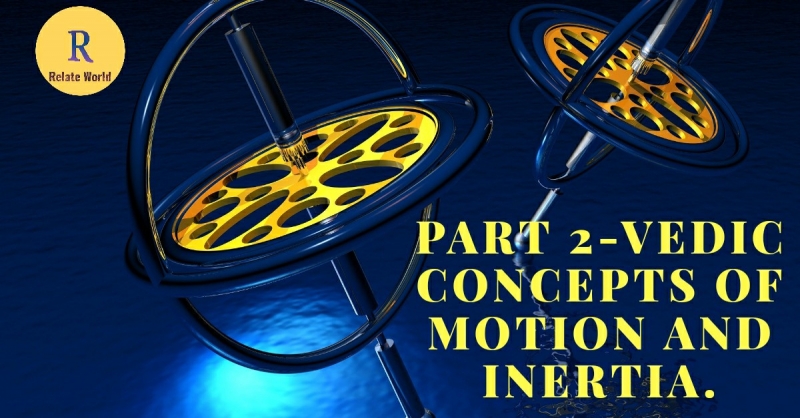
Part-1 Know Vedic Science Of Motion And Inertia.
Everything in the universe can be divided into two categories: bosons (ऋतम्) or energy (शक्तिः - कार्यजननसामर्थ्य) and fermions (सत्यम्) or matter (द्रव्य). Bosons (ऋतम् - भातिसिद्ध-अहृदय-अशरीरि) have no fixed structure and hence can occupy the same position or be in superposition (अध्यास). Fermions (सत्यम् – स+ति+यम् - स्थितिसिद्ध-सहृदय-सशरीरि) follow exclusion principle (विष्टम्भकत्व), because they have fixed structures. Initially, there was no such division. Everything was a bosonic field now called a quark-gluon plasma (ऋतमेव परमेष्ठि। ऋतं नात्येति किञ्चन। ऋते समुद्र आहितः। ऋते भूमिरियँ श्रिता। - तैत्तिरीयब्राह्मणम् – 1-5-5-1. Also, शतपथब्राह्मणम् 11-2-7-9).
Forces only push objects. There is nothing as a pull. At best what appears as a pull, is a push from the opposite direction. Thus, when a force is applied from a controlled direction (नियतदिक्क्रियाप्रबन्धहेतुः), it pushes the object in the same direction, provided, it is sufficient to break the inertia. The push can be of two types: 1) away from the center of mass towards the periphery till it is confined (गति); and 2) from the periphery or the field or the background structure towards the center, confining the outgoing radiation (आगति). The former is called positive charge (पुंलिङ्गम् characterized by प्रसव - creation of new particles) and the latter is called negative charge (स्त्रीलिङ्गम् characterized by संस्त्यान - confinement). Here charge is defined as the observable creative potential of everything (सामर्थ्य सर्वभावानां लिङ्गमित्यभिधीयते). Thus, confinement is a characteristic of the background or the field (स्त्रीयः सतीस्ताँ उ मे पुंस आहुः Rhk Veda 1-164-16). The interaction between charges determines the structure and properties of everything.
Charge neutral position of rest (स्थिति or प्रतिष्ठा) is where both opposite charges are in equilibrium or cancel each other. Hence, whenever we think of position or rest or equilibrium, we must consider the motions (स्थितस्य गति चिन्तनीया). The equilibrium is called BRAHMAA (ब्रह्मा), pure outward motion is called INDRA () and pure inward motion is called VISHNU (विष्णु). When the outward motion goes through the equilibrium position, it gets affected and becomes AGNI (अग्नि). When the same thing happens to the inward motion, it becomes SOMA (सोम). Think of the Sun and the Earth. Both attract each other. When a force starts from the Sun, it is radiative Indra. At the same time another force moves from Earth to block it. That is magnetic Vishnu. By the time they meet each other at the magnetosphere, both the Sun and the Earth have moved from their original position. Hence, the two forces make a couple, which intersect at one point. The outward motion from that point is Agni. The inward motion is Soma. This gives rise to electromagnetism.
Here, the point to note is: the negative charge is less in magnitude than the positive charge (अग्निर्जागार तमयं सोम आह तवाहमस्मि सख्ये न्योकाः – ऋग्वेद 5-44-15) and the particles are charged and more than two (यो जागार तमृचः कामयन्ते यो जागार तमु सामानि यन्ति – ऋग्वेद 5-44-14).
In modern science, charge interactions are described by the Coulomb’s law, which describes only interaction between charged particles. It cannot describe interaction between a charged particle and a charge-neutral object. In Vedic sciences, the charge interaction is described as follows:
a) Interaction between two positive charges lead to repulsion (विस्फोटक).
b) Total interaction between a positive charges and a negative charge lead to increase in the mass number or creation of a new isotopes (पुष्टिकर).
c) Partial interaction between a positive charges and a negative charge lead to creation of new atoms (सृष्टिकर).
d) Interaction between two negative charges only increases the charge density and is otherwise ineffective (निरर्थक). For this reason only, we can have electricity, where electrons flow without repelling each other. The flow is not repulsion, but it is the nature of energy – to push everything.
continue reading Part -2
https://relateworld.com/basudeba/post/220
#vedicscience #science
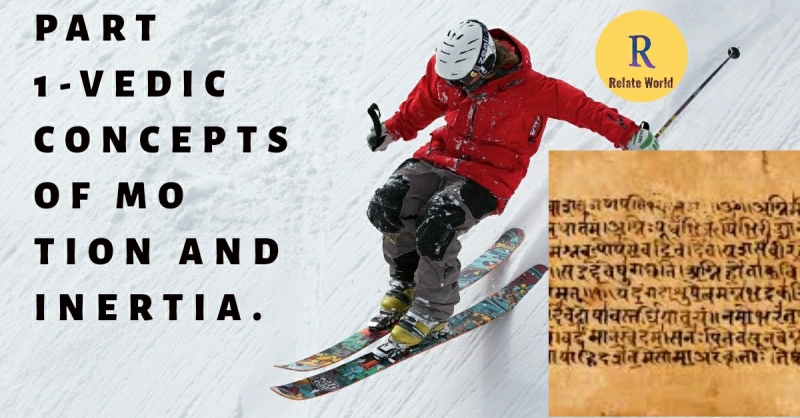
Understand wonderful Vedic concept of matter in modern science terms.
What we know
as matter (द्रव्यम् or वस्तु ), has five physical manifestations:
1) Compact objects called solids (निविडावयवः) – they have fixed volumes (परिमाणम) and fixed
dimensions (आयतनम - that which limits spread of objects to retains its separate identity - विस्तार:
- from its environment / base – आधार-आधेय सम्बन्धः), which remains invariant under mutual
translation – if length is changed to breadth or height etc., (विस्तारस्य यथैवार्थ आयामेन प्रकाशितः।
तथारोहसमुच्छ्रायौ पर्यायवाचिनौ मतौ). In atomic scales, it is dominated by the strong nuclear
interaction (अन्तर्यामसम्बन्धः) and in the macro world, its effect is seen as contraction (आकुञ्चनम).
2) Loosely held objects called fluids (त रलावयवः) – they do not have fixed dimensions, but have fixed
volumes. In atomic scales, it is dominated by part of the weak nuclear interaction (वहिर्यामसम्बन्धः)
leading to conversion of proton to neutron and vice versa. In the macro world, its effect is seen
as limited expansion from low concentration to contraction towards high concentration - fall
(अवक्षेपणम).
3) Remotely held objects called heat or radiation (विरलावयवः) – they have neither fixed dimensions
nor fixed volume. In atomic scales, it is dominated by the electromagnetic interaction
(उपयामसम्बन्धः) and in the macro world, its effect is seen as moving from high concentration to
low concentration (प्रसारणम).
4) Energy that flows (वाति) and provides motion to everything (वायु ). In atomic scales, it is dominated
by the radioactive decay (यातयामसम्बन्धः) and in the macro world, its effect is seen as explosions
(उत्क्षेपणम).
The above four are intra-body or confined interactions (याम सम्बन्ध - या प्रापणे), which must be
contained (विधृति:) in a container or a field like energy and the field, and where both interact
separately based on their own nature (charge – स्वरूपसम्बन्धः). For example, the strong interaction
exhibits proximity-proximity (संस्त्यान-संस्त्यान) tendencies of both components, whereas the
weak interaction shows proximity-distance (संस्त्यान-प्रसवः) tendencies of both components.
5) The fifth is an interbody interaction (वृतितत्वसम्बन्धः), where both attract each other (आकषर्णम),
which requires not only more than one bodies having similar properties (like mass) in a field and
treats the bodies as point particles (कूटस्थः), but also a constant factor representing the ratio
between them, which keeps the bodies from each other from a common barycenter (नाभि :) at the
maximum possible distance (स्तोममहत् उरुगायप्रतिष्ठा). This appears as gravitational interaction
(उदयामसम्बन्धः). The space (आकाशम,ख, शून्यम) acts as the universal background (प्रतिष्ठा) where
everything exists (आधारशकित्तः प्रथमा) and which connects the intervals between every object
(सर्वसंयोचगिां मता), though not getting involved with anything (अन्तरिक्षमम्– अन्तरा क्षान्तं भवति).
In both atomic scales and in the macro world, it provides motion (गमन) that keeps the two bodies
equidistance from a common barycenter (उरुगायप्रतिष्ठा).
These five are called Bhoota - भूतम (from root भू सत्ता॑याम + अधिकरणादयर्थेषु क्त:) meaning whatever has
existence, or whatever exists together with others (अथवा भुवोऽवकल्क॑नेमिश्रीकरण इत्येके) . Also because
they are Bhooma – (भूमा) all pervasive – found everywhere or these provide us everything we want ( भू प्राप्तौ). These five are called Prithwee, Jal, Teja, Vaayu and Aakaasha ( पृथ्वी जल, तेज:, वायु:,अकाशम )respectively. They are not Earth, water, fire, air and space, though these are covered in those descriptions.
For example, Earth is Prithwee, which is solid (चरणसञ्चारोग्य), but Prithwee is not limited to Earth only.
Everything including our bodies are constituted of these five elements. Whatever solid in our body, is
Prithwee. All fluid are Jal, all heat is Teja. All motion is Vaayu. All intervals are Aakaash. Kashyapa describes
which component of the body is derived from which elements.
Relate this concept with concept of Vaata, Kapha, Vayu. (https://relateworld.com/basudeba/post/215)
#vedic #science
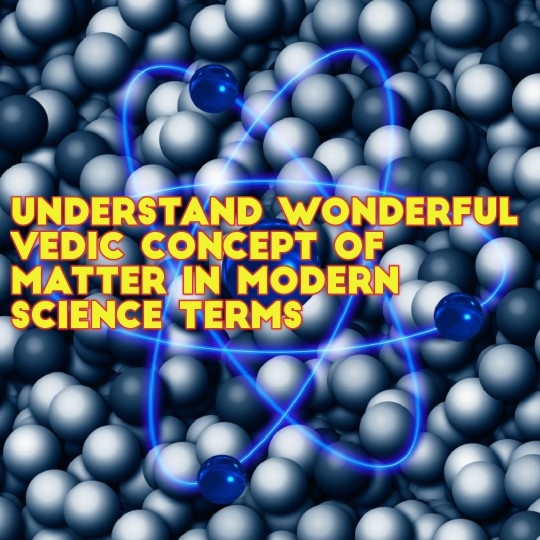
Know three causes of disease from Ayurveda point of view
Disease has three causes. The first is crossing the tolerance range. Our bodies are programmed to tolerate
all sensations within a specific range. If we cross that range either way, it is called असात्म्य इत्न्द्रयार्थसनीकर्ष
. Prolonged exposure to this imbalance creates problems in specific areas, which makes
us uncomfortable. That is disease.
Time evolution – परिणाम: , It is common to all. What is good in summer is not good in winter or rainy
season. What is good in childhood is not good in youth or old age. Life style based on intake of
inappropriate elements, causes disease.
Sometimes we lose control over our emotions. Food is tasty. We lose control and overeat. We are angry.
We do undesirable things. Sometimes we may know about it and know that we are doing something
wrong. This is called guilty-consciousness - प्रज्ञापराध: . This also causes disease. How to treat it?
Water is caused by a combination of hydrogen and oxygen. But water is not a combination of these two.
They must combine under strictly regulated conditions that creates a new product with totally different
properties. The same is true for all other chemical compositions. Such reactions are called deformations
(पवकािः). When two Bhoota combine, it is called Rasa ( रस from, रसँ आस्वादन स्नेहनयो :).
Deformation (पवकािः) is different from evolution (पववतथः). When a body changes into something else while
retaining its original characteristics, it is called evolution (पववतथः). When a body changes into something
with totally different characteristics, it is called deformation (पवकािः). Aakaasha (space) being inert, does
not take part in any chemical reaction. The Prithwee component of the body can be deformed by Jala,
Teja and Vaayu. The Jala component of the body can be deformed by Teja and Vaayu. The Teja component
of the body can be deformed by Vaayu. This makes for a total of six types of fundamental Rasa. These are
called Madhura (मधुरम - sweet), Amla (अम्ल - sour, acidic), Lavana (लवणम - salty), Teekshna (तीक्ष्णम
bitter), Kashaaya ( कशायम -astringent), Tikta (तीक्तम pungent).
If one looks at the chemical composition of sugars, one will find a commonality. The number of carbon
atoms is same as that of oxygen atoms and number of hydrogen atoms is double that of oxygen like
C6H12O6 or C11H22O11 or C12H24O12 etc. In other words, the number of carbon atoms is equal to those of
water molecules. Since organic compounds are carbon based, our ancient science says Prithwee - पृथ्वी
तत्त्व & Jal - जल तत्त्व combined becomes sweet - मधुररस. A similar combination makes way for the
other Rasas.
Thousands of years before the Primitive Recursive Arithmetic (PRA) came up in Europe, Pingala and others
in ancient India used combinatorics to formulate various recursive algorithms in various texts. It is now
ascribed to Europeans. One famous example used by Halayudha about a thousand years ago in his
commentary on Pingala’s work (Meru Prastaara - मेरुप्रस्तार) is now known as Pascal’s triangles. Halayudha
clearly mentions:
अतोऽनेकदवित्रिलघु क्रियाशसद्यर्थ यावदभिमतं प्रथमप्रस्तारवन्मेरुप्रस्तारं दर्शयति परे पूर्णमिति- ॥ ८। ३५ ॥
उपरिष्टादेकम् चतुरस्रकोष्ठम् लिखित्वा
तस्याधस्तादुभयतोऽर्धनिष्क्रान्तम् कोष्ठकद्बवयं लिखेत् । तस्याप्यधस्तात्रयं
तस्याप्यधस्ताच्चतुष्टयं यावदभिमतं स्थान मिति मेरुप्रस्तारः॥ तस्य प्रथमे कोष्ठे एकसंखयां व्यवस्थाप्य लक्षणशमिदं
प्रवर्येत। तत्र परे कोष्ठे यदवृत्तसंखयाजातं तत् पूर्व कोष्टयोः पूर्णम निवेशयत।
This continued till Patiganita says:
कटुतिक्त कषाया म्ल लवण मधुरै: सखै रसै: षड्भिः ।
विदधाति सूपकारो व्यञ्ज नमाचक्ष्व कति भेदम ॥
(पाटी गणित , उदाहरण श्लोक - 95)
अथाथत - हे मित्र, कटु , तिकत्त, कषाय, अम्ल, लवण, तथा मधुर इि न छः रसों को 1, 2, 3 आदि के मेल से रसोइया क्रमशः कितने प्रकार का व्यंजन बना सकता है, बताओ? Answer 64.
The ancient sage Kashyapa used this to classify all possible Rasas into 64. He divided the diseases into
sixty-four categories and prescribed a method for treating them with a combination of an appropriate
Rasa
Read concept of Vaata,Kapha,Vayu(https://relateworld.com/basudeba/post/215)
#science #vedic #ayurveda #medical

Want to know CONCEPT OF VAATA , PITTA & KAPHA from modern science perspective.
The concepts of Vaata - वातः, Pitta - पित्तम and Kapha – कफः, called Dhatu धातु:), are central to Ayurveda
– the ancient Indian system of long and healthy life. For understanding these concepts, one has to look at
the physics of everything, because the body represents the universe ( यतपिंडे तद्ब्रह्माण्डे). (Read in detail about concept of matter https://relateworld.com/basudeba/post/217)
1) Compact objects called solids (निविडावयवः)
2) Loosely held objects called fluids (त रलावयवः) .
3) Remotely held objects called heat or radiation (विरलावयवः)
4) Energy that flows (वाति) and provides motion to everything (वायु ).
5) The fifth is an interbody interaction (वृतितत्वसम्बन्धः)
These five are called Bhoota - भूतम (from root, भू सत्ता॑याम + अचधकिणाद्ब्यथेर्, क्त:) meaning whatever has
existence, or whatever exists together with others (अथवा भूवो sवोऽवा॒कल्क॑ िे, मिश्रीकरण इत्येके) . Also because
they are Bhooma – (भूमा) all pervasive – found everywhere or these provide us everything we want ( भू प्राप्तौ). These five are called Prithwee, Jal, Teja, Vaayu and Aakaasha ( पृथ्वी जल, तेज:, वायु:,अकाशम )respectively. They are not Earth, water, fire, air and space, though these are covered in those descriptions.
For example, Earth is Prithwee, which is solid (चरणसञ्चारोग्य) ), but Prithwee is not limited to Earth only.
Everything including our bodies are constituted of these five elements. Whatever solid in our body, is
Prithwee. All fluid are Jal, all heat is Teja. All motion is Vaayu. All intervals are Aakaash. Kashyapa describes
which component of the body is derived from which elements. That is not being discussed now.
Human body contains some deformations of Jal - Kapha – कफः, heat - Pitta - पित्तम, and Vaayu - Vaata -
वातः called Tri-Dhatu (त्रिधातु:). Each person does not have the same balance, which is determined at
conception and birth. This makes seven body types – three for the three Dhatus dominating, three for two
of the three dominating and one where all three dominate. If their proportion is balanced, the person is
healthy. If the proportion is disturbed due to inheritance, life style, seasonal effects, food intake, etc, we
feel uncomfortable. That is disease.
Want to know more about Cause of disease.Read( https://relateworld.com/basudeba/post/216)
#vedic #science #ayurveda
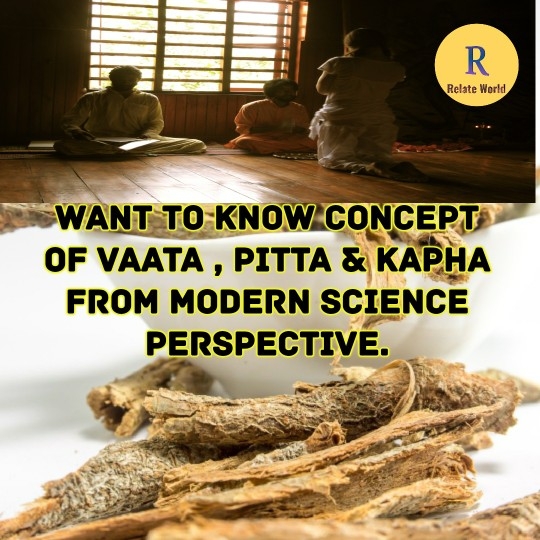
पढ़ें और गर्व महसूस करें! singularity की खोज वैदिक वैज्ञानिकों द्वारा आज की क्वांटम भौतिकी से सदियों पहले की गई थी।
#science #veda #philosophy
पढ़ें और गर्व महसूस करें! वैदिक वैज्ञानिकों द्वारा आज की क्वांटम भौतिकी से सदियों पहले singularity की खोज की गई थी। singularity क्या है? यह अनिर्वचनीय है। आधुनिक विज्ञान में क्षेत्र(Field) के बारे में बहुत भ्रम है। वैदिक विज्ञान के अनुसार, केवल दो प्रकार के क्षेत्र (Field) हैं:, स्थूल और सूक्ष्म। पूर्व बाहरी क्षेत्र है और दूसरा आंतरिक क्षेत्र या मानसिक क्षेत्र है। मैदान में ऊर्जा प्रवाहित होती है। ऊर्जा अलग हो सकती है। अंतरिक्ष सार्वभौमिक क्षेत्र है - आधार शक्ति प्रथमा , जो सब कुछ जोड़ता है - सर्वर समय योगिन मतह। यह एक बोसोनिक क्षेत्र है, क्योंकि प्रत्येक ऊर्जा एक ही स्थान पर सह-अस्तित्व में आ सकती है। लेकिन आधुनिक विज्ञान ऊर्जा को उस क्षेत्र के रूप में समझकर भ्रमित हो रहा है। आधुनिक परिभाषा के अनुसार, एक क्षेत्र (Field) अंतरिक्ष का एक क्षेत्र है, जिसमें प्रवेश करने पर, हम एक बल का अनुभव करते हैं। बल की प्रकृति के आधार पर, क्षेत्र (Field)को नाम दिया गया है। विवरण सही है, लेकिन नामकरण गलत है। यह उसी क्षेत्र(Field) में फुट-बॉल और हॉकी खेलने जैसा है। मैदान वही रहता है, लेकिन खिलाड़ी और औजार केवल बदलते हैं। आप एक ही क्षेत्र(Field) में एक एथलेटिक्स प्रतियोगिता भी कर सकते हैं। यह मैदान को फुटबॉल का मैदान, या हॉकी का मैदान या एथलेटिक फील्ड नहीं बनाता है। क्षेत्र खेल से प्रभावित नहीं है, लेकिन खिलाड़ियों और उनके उपकरणों की गतिविधियों के कारण खेल बदल जाते हैं। अंतरिक्ष (space)समान है। यह सार्वभौमिक क्षेत्र(Field) है। बल इसे प्रभावित नहीं करते हैं। वे औजार की तरह हैं। इसमें प्रवेश करने वाले कण खिलाड़ी की तरह होते हैं। आंदोलनों और अंतर्क्रियाओं के कारण बलों (औजार) होते हैं और उनके प्रभाव (गोल करने के लिए दौड़ना या दूसरों की तुलना में तेजी से आगे बढ़ना) को अलग-अलग खेलों के रूप में बाहर से देखा जाता है। लेकिन इसका क्षेत्र (Field) से कोई लेना-देना नहीं है। भीतरी क्षेत्र(Field) में भी कुछ ऐसा ही होता है। हम यांत्रिक तरीके से उत्तेजना का जवाब देते हैं। यही कारण है कि, कणाद ने विचार (भाव) को मन की जड़ता माना है। यहां तक कि वह लचीलापन को जड़ता के रूप में मानता है, क्योंकि बल के प्रारंभिक अनुप्रयोग के बाद मूल स्थिति का संरक्षण किया जाता है - स्थिति स्थापक संस्कार ।
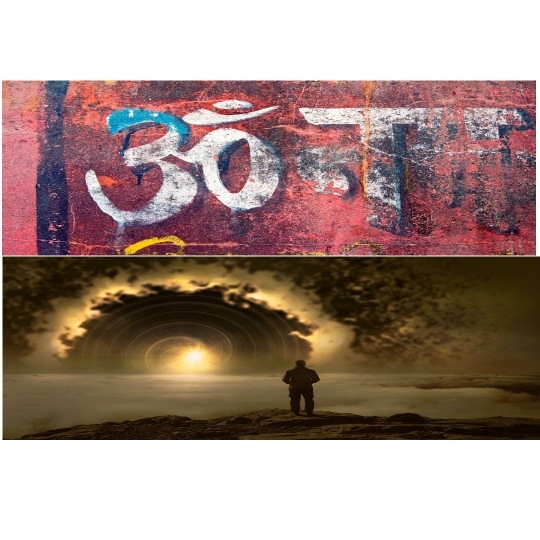
Read and feel proud! Singularity concept was discovered by Vedic scientists centuries ago before today's quantum physics.
What is singularity? It is अनिर्वचनीय.
There is much confusion regarding field in modern science. According to Vedic science, there are only two types of fields: Sthoola and Sookshma. The former is the external field and the later is the inner field or the mental field. Energy flows in the field. The energy can be different. Space is the universal field - AADHAARA SHAKTI PRATHAMAA, that connects everything - SARVA-SAMYOGINAA MATAAH. It is a bosonic field, because every energy can coexist in the same space. But modern science confuses the energies as that of the field.
By modern definition, a field is a region of space, upon entering which, we experience a force. Depending upon the nature of the force, the field is so named. The description is right, but the nomenclature is wrong. It is like playing foot-ball and hockey in the same field. The field remains same, but the players and implements only change. You can have an athletics competition in the same field also. This does not make the field football field, or hockey field or athletic field. The field is not affected by the game, but the games change because of the activities of the players and their implements. Space is similar. It is the universal field. Forces does not affect it. They are like implements. Particles that enter it are like players. There movements and interactions are because of the forces (implements) and their effects (running to score goals or move faster than others) are seen from outside as different games. But it has nothing to do with the field.
Something similar happens in the inner field also. We respond to stimulae in mechanical manner. That is the reason, why Kanada considers thought (Bhaavanaa) as the inertia of mind. Even he considers elasticity as inertia, because the original state is conserved after initial application of force - STHITI STHAAPAKA SAMSKAARA.
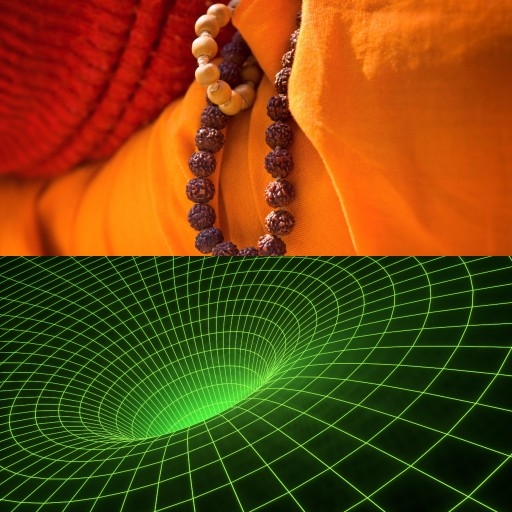
# festival: क्या आप तर्क और वैज्ञानिक कारण को जानकर अपने शिवरात्रि को अधिक शुभ (पवित्र) बनाना चाहते हैं। शिवरात्रि भारत में एक बड़ा त्योहार है। आमतौर पर अविवाहित लड़कियां इसे उपवास और शिव की पूजा करके मनाती हैं और ऐसा माना जाता है कि, यह एक अच्छा पति पाने की ओर ले जाता है। यहां तक कि विवाहित महिलाएं भी व्रत का पालन करती हैं। यह महादीप के बाद समाप्त होता है या पवित्र प्रकाश को मंदिर तक लाया जाता है। हमारी परंपरा में हर त्योहार का कोई न कोई वैज्ञानिक आधार होता है। इसके तीन पहलू हैं, जिनमें से पहले को अधिभूत कहा जाता है। यह भौतिक पहलू है। प्रकृति वह सब कुछ प्रदान करती है जिसकी हमें आवश्यकता होती है। लेकिन जब कोई चीज़ हमारी ज़रूरत के मुताबिक नहीं होती है और हम इसे दूसरे माध्यमों से चाहते हैं, तो हम प्राकृतिक अवयवों के विकल्प के प्रतीक वाले विकल्प का उपयोग करके प्राकृतिक प्रक्रिया की नकल करते हैं। दूसरा पहलू अधिदेव कहलाता है। यह ऊर्जा का पहलू है। इस प्रक्रिया में हम अपनी इच्छित वस्तु को प्राप्त करने के लिए अलग-अलग ऊर्जाओं को विनियमित तरीके से लागू करते हैं। तीसरा है अध्यात्म। यह चेतना संबंधी पहलू है।
शिव की पूजा लिंगम के माध्यम से की जाती है, जिसका शाब्दिक अर्थ है प्रतीक और वास्तव में इसका अर्थ है, जो किसी वस्तु का निर्माण करता है। यह लिंगम कभी भी अकेले में नहीं पाया जाता है, लेकिन हमेशा एक योनि (भोक्तृ-भोग्य सम्बन्धी) के साथ होता है, जिसका शाब्दिक अर्थ है सृष्टि का स्थान। उनकी व्यवस्था की ख़ासियत यह है कि, लिंगम योनी से बाहर आ रहा है और उसमें प्रवेश नहीं कर रहा है। योनी को भी इस तरह रखा गया है कि यह उत्तर की ओर इशारा करती है। जब हम विद्युत चुम्बकीय क्षेत्र (ब्रह्मविष्णुमयो रुद्र अग्निषोमात्मक जगत्) को देखते हैं, तो हम पाते हैं कि चुंबकीय क्षेत्र रेखाएँ दक्षिणी ध्रुव से निकलती हैं और उत्तरी ध्रुव के माध्यम से प्रवेश करती हैं। गर्म विद्युत भाग (घोर-आग्निरस-अग्नि) को शांत चुंबकीय भाग (सोमसम्बन्ध) के साथ बातचीत के माध्यम से परोपकारी (शिव-शान्त-भाव) बनाया जाता है। इसलिए, इसका अनुकरण करते हुए, हम ये अग्नये स्वाहा का जप करते हैं। ‘ॐ अग्नये स्वाहा।। इदमग्नये इदन्न मम 'और उत्तर दिशा में हविह (हविः - यज्ञ की पेशकश) करें और ‘ॐ सोमाय स्वाहा। इदं सोमाय इदन्न मम’ स्वाहा का जाप करें।
शिवरात्रि से इसका क्या लेना-देना है? इसे समझने के लिए हमें सांख्य दर्शन में जाना होगा। यह प्रकृति (प्रकृति) को 24 मूलभूत तत्वों में वर्गीकृत करता है,जो यंत्रवत रूप से निष्क्रिय और कार्य करते हैं। 25 वां पुरुष (पुरुष) है, जो कि चेतन तत्त्व है। कल्पसूत्रम् में इसके 12 विभाग हैं, जो मूलभूत संस्थाओं की सूची को 36 (षट्त्रिंश तत्त्वनाम विश्वम्) में ले जाता है। इन 36 मूलभूत तत्वों में से पहले दो परम शिव (परमशिव) हैं, जिन्हें शान्तातीत और शक्ति भी कहा जाता है। वे अविभाज्य, अंग हैं। एकीकरण में वे अर्धनारीश्वर हैं। हालांकि, जब वे लीला शुरू करने की इच्छा रखते हैं, तो वे सब कुछ बनाने के लिए विभिन्न रूपों में विकसित होते हैं।
निर्माण से पहले, कोई गति नहीं थी। इसलिए गर्मी नहीं थी। जो कि हिमालय का प्रतीक है। शक्ति ने शिव के साथ एकजुट होने की कोशिश के बाद निर्माण शुरू किया। यह एक तीव्र इच्छा थी जो सृजन की ओर ले जाती है। इसलिए यह सब चाहते हैं - यहाँ तक कि भोजन - और अत्यंत ध्यान और एकाग्रता के साथ प्रार्थना करने का प्रतीक है। इससे भक्ति की तीव्रता के आधार पर इच्छा की पूर्ति होती है। एक कहावत है:
शशिना च निशा निशया च शशीः
शशिना निशया च विभाति नभः ।
पयसा कमलं कमलेन पयः
पयसा कमलेन विभाति सरः ॥
इसका मतलब है, रात चाँद की वजह से चमकती है और चाँद रात के अंधेरे में चमकता है। रात और चाँद दोनों के कारण आकाश चमकता है। कमल के कारण पानी सुंदर दिखता है और कमल पानी में सुंदर दिखता है। पानी और कमल दोनों के कारण तालाब सुंदर दिखता है। इसी तरह, शिव-शक्ति समान रूप से एकजुट होने पर विश्व सुंदर दिखता है। आइए हम एक दम्पति द्वारा प्रतीकित उस एकीकरण के लिए प्रार्थना करें - एक घर में एक युगल और शारीरिक संप्रभुता के साथ अलग-अलग संस्थाएं नहीं, जो रुद्र का परिचय देती हैं और शिव को समावेश करती है ।
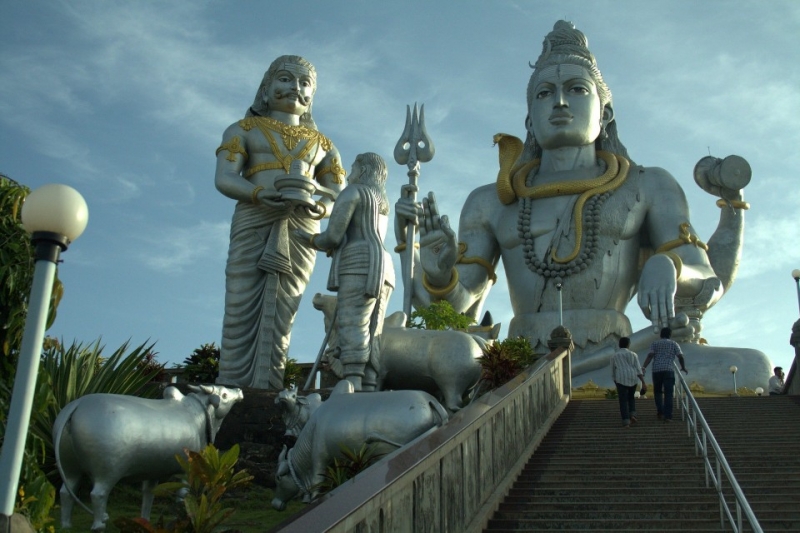
#festival: Do you want to make your shivaratri more shubh(pious) by knowing most logical and scientific reason behind it.
Shivaratri is a big festival in India. Generally the unmarried girls celebrate it by fasting and worshipping Shiva and it is believed that, it leads to getting a good husband. Even married women observe the fasting. It ends after the MAHADEEP or the sacred light is brought up the temple.
Every festival in our tradition has some scientific basis. It has three aspects, out of which the first is called ADHI BHOOTA. It is the material aspect. Nature provides everything that we need. But when something is not according to our need and we want it through other means, we imitate the natural process by using substitutes that symbolize alternative to natural ingredients. The second aspect is called ADHI DAIVA. It is the energy aspect. In this process we invoke the different energies in a regulated manner to achieve our desired object. The third is ADHYAATMA. This is the Sentient or Conscious aspect.
Shiva is worshipped through LINGAM, which literally means symbol and actually means that which leads to creation of something. This Lingam is never found in isolation, but is always with a YONI (भोक्तृ-भोग्य सम्बन्धात्मक), which literally means the place of creation. The peculiarity of their arrangement is, the Lingam is coming out of the Yoni and not entering it. The Yoni is also placed in such a way that it points to North. When we look at the electromagnetic fields (ब्रह्मविष्णुमयो रुद्र अग्निषोमात्मक जगत्), we find that the magnetic field lines emerge from the south pole and curve up to enter through the north pole. The hot electric part (घोर-आग्निरस-अग्नि)is made benevolent (शिव-शान्त-भाव) through interaction with the cool magnetic part (सोमसम्बन्ध). Hence, while imitating it, we chant ‘ॐ अग्नये स्वाहा। इदमग्नये इदन्न मम’ and offer Havih (हविः - sacrificial offering) in the north direction and chant ‘ॐ सोमाय स्वाहा। इदं सोमाय इदन्न मम’ while offering Havih in the north direction.
What has it to do with Shivaratri? To understand this, we have to go to Sankhya Darshan. It classifies the Nature (प्रकृति) into 24 fundamental entities (तत्त्व -literally meaning that-ness, because there is nothing else like them) that are inert and function mechanically. The 25th is Purusha (पुरुष), which is the Sentient concept (चेतन तत्त्व). This one has 12 divisions in Kalpa Sootram (कल्पसूत्रम्), which takes the list of fundamental entities to 36 (षट्त्रिंशत् तत्त्वानि विश्वम्). The first two of these 36 fundamental entities are Parama Shiva (परमशिव), also known as Shaantaateeta (शान्तातीत) and Shakti (शक्ति). They are inseparable complements. In unification they are un-differentiable (अर्धनारीश्वर). However, when they desire to start LEELAA (लीला), they evolve in various forms to create everything.
Before creation, there was no motion. Hence there was no heat. That is symbolized by Himalaya. The creation began after Shakti tried to unite with Shiva. It was an intense desire that leads to creation. Hence it is symbolized by giving up all want – even food – and praying with utmost attention and concentration. That leads to fulfillment of desire depending upon the intensity of devotion.
There is a saying:
शशिना च निशा निशया च शशीः
शशिना निशया च विभाति नभः ।
पयसा कमलं कमलेन पयः
पयसा कमलेन विभाति सरः ॥
It means, the night shines due to the moon and the moon shines in the darkness of night. The sky shines due to both night and moon. The water looks beautiful due to the lotus and the lotus looks beautiful in water. The pond looks beautiful due to both the water and the lotus. Similarly, the World looks beautiful when Shiva-Shakti are united equally. Let us pray for that unification symbolized by a DAMPATI (दम्पती) – a Couple in a household and not individual entities with bodily sovereignty, which introduces RUDRA and covers up SHIVA.
